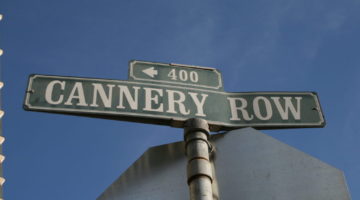To Kill a Mockingbird in Monroeville
Donna Dailey visits Monroeville in Alabama, home of novelist Harper Lee and the setting for her novel To Kill a Mockingbird
In 1960, as the Civil Rights movement gathered steam across America, one small, fictional Alabama town became a symbol for Southern justice. Maycomb was the setting for the best-selling novel To Kill A Mockingbird. It was the only book Harper Lee published during her lifetime, yet it became a literary classic and earned her a Pulitzer Prize.
To Lee the novel was ‘a love story pure and simple’, about a small town and a way of life that were dear to her heart. In the opening chapters six-year-old Scout Finch paints an idyllic picture of her world. Summer days are spent with her brother Jem and friend Dill, devising schemes to make the neighbourhood recluse, Boo Radley, ‘come out’. All her fears can be resolved in the comforting lap of her lawyer father, Atticus. But when Atticus defends Tom Robinson, a black man wrongly accused of raping a white woman, the events surrounding the trial shatter their childhood innocence and change their view of Maycomb forever.
To Kill A Mockingbird is both a charming story of the love between a father and his children, and a dark tale of racism taken to extremes. It alternately delights and despairs at human behaviour as Scout and Jem struggle to understand Maycomb’s ways.
Monroeville, Alabama, where Harper Lee grew up in the 1930s, was the model for Maycomb. While the plot is pure fiction, Lee drew heavily on the characters and places from her childhood. Scout describes Maycomb as ‘a tired old town when I first knew it… Somehow, it was hotter then; a black dog suffered on a summer’s day. Ladies bathed before noon, after their three o’clock naps, and by nightfall were like soft teacakes with frostings of sweat and sweet talcum’.

I visit Monroeville in cooler weather, and when I reach the courthouse square I’m thrown back half a century. There, in all its glory, stands the old brick courthouse with its white-domed clock tower. A replica of it was created for the film version of To Kill A Mockingbird. Thus the courtroom with its white railings and curved balcony — the ‘coloured balcony’ where Scout and Jem watched the trial — looks familiar. The courthouse is now a museum, and each May local actors perform a play based on the novel here.
Surrounding the square are old-fashioned shopfronts and a good half-dozen law offices. On the west side is the jail, where Atticus faced down a lynch mob, though the squat concrete building bears little resemblance to Maycomb’s ‘Gothic joke’.
‘There are some men in this world who were born to do our unpleasant jobs for us. Your father’s one of them,’ Miss Maudie tells Jem after Tom Robinson is convicted. Like Atticus Finch, Lee’s father Amasa was a pillar of the community. He too was a lawyer and served in the state legislature, though as a tax and title attorney he never tried a case. His office was next to the jail, as was Atticus’s, in the former Monroe County Bank, now an antiques shop.

Alabama Avenue runs from the opposite side of the square past the site of the house where Harper Lee grew up. This street corresponds to much of the action in the novel. Lee based Dill on her childhood chum, the author Truman Capote, who like his character spent summers with his cousins, the Faulk sisters, next door. The Faulk house burned down, and is marked by a rock wall and a plaque to Capote. Lee’s house was demolished to make room for Mel’s Dairy Dream diner.
Just beyond, the street curves south as it does in the book, past the big oak and the ominous Radley place with the school behind. A petrol station now stands where a real-life Boo Radley of sorts once lived, locked in his room after some laddish mischief.
On nearby Maple Street, I find a house still standing from the 1930s. With its low rafters casting dark shadows across the porch, like Scout I can almost see Boo Radley sitting in the swing. In the end, Boo was their saviour. He gave them ‘two soap dolls, a broken watch and chain….and our lives’. Standing on the Radley porch, Scout realised that ‘Atticus was right….you never really know a man until you stand in his shoes and walk around in them’.
Monroeville isn’t Maycomb, but it will always be associated with Mockingbird. Neighbours gossip, and children still say ‘yes ma’am’ with a courtesy rare these days. In the courthouse, a gospel choir is performing for the Heritage Arts Festival. As I climb the stairs for the best view, I notice the pleasant irony that the seats below are filled with black people enjoying the music while a handful of whites watch from the balcony. Afterwards I retire to the Courthouse Cafe for a ‘Dill’ burger and ‘Finch’ fries.














